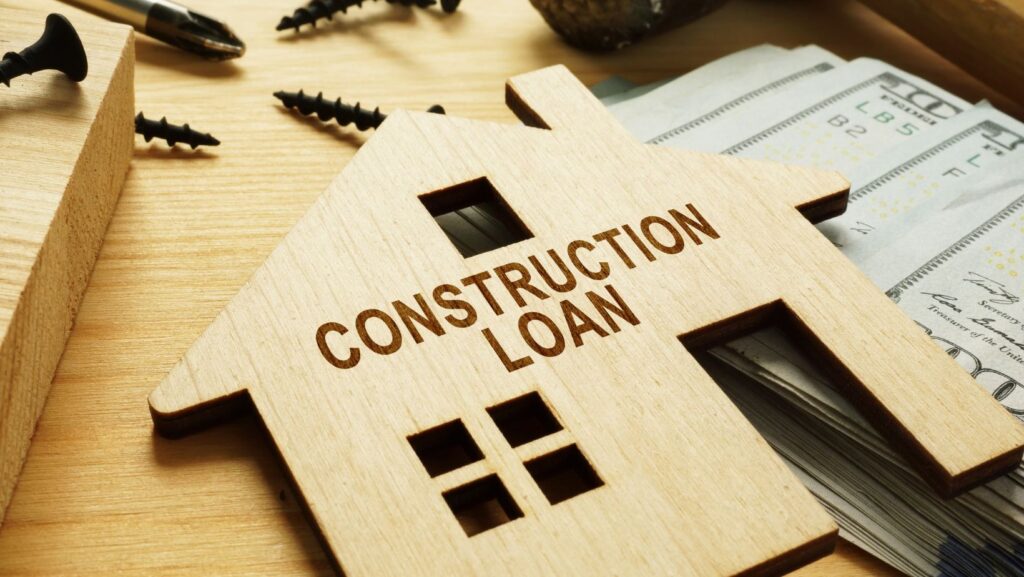Building a house from the ground up is a dream a lot of people have, but it has its own set of financial challenges, particularly in California, compared with most other states, where the costs of both living and constructing are measurably higher. A construction loan can turn that dream into a reality, but it’s not the same as a traditional mortgage. And in this guide, we detail what these loans are, how they operate in California, who qualifies, and what to expect at each step of the way.
Whether you want to build in Los Angeles or Sacramento or in a sleepy little town along the coast, understanding how construction financing works can save you significant money and delays. Consulting reliable, trusted California construction loan experts provides additional advantages of not only selecting an ideal loan, but also ensuring that you confidently navigate through location-specific requirements.
Contents
Table of Contents
ToggleWhat Is a Construction Loan and How Does It Work in California?
It’s a short-term loan designed to finance the cost of building a home, known as a construction loan. While a typical mortgage is based on the value of an existing home, a construction loan is based on the estimated value of the home once it’s built. This means that the bank is essentially lending money on something that does not yet exist, which adds more risk and, more complexity.
Lenders are particularly wary in California, where land values and construction costs tend to be higher. The loan is typically dispersed in installments, or “draws.” Draws correspond to a specific phase of construction, like laying a foundation, framing, or installing a roof and windows. The lender sends inspectors to confirm that each stage has been completed before releasing the next chunk of money.
While under construction, borrowers typically only pay interest on whatever amount has been drawn. When the house is finished, the loan becomes a typical mortgage (if it is a construction-to-permanent loan) or must be refinanced separately if it’s a standalone construction loan.
Who Can Apply and What You Need to Qualify
Construction loans are not for everybody, and even in a state like California, this is not a one-size-fits-all proposition. Because these loans are riskier for lenders, the requirements tend to be more stringent than those of a traditional mortgage. You’ll want to have a good credit score — typically over 680 — and a steady source of income. Lenders will also want to know that you have sufficient savings to support a larger-than-normal down payment — usually 20 to 30 percent of the total project cost.
In addition to financial qualifications, you’ll need to provide a detailed construction plan. This means plans, permits, and a construction timeline from a licensed builder. Several lenders in California expect that you will work with a licensed general contractor, not attempt to build the house on your own.
This is where documentation comes into play, huge. You may need to turn over items as varied as tax returns and bank statements and building permits and contractor agreements. Lenders need to ensure that a project is feasible, properly budgeted and professionally managed.
Since California building statutes can differ widely depending on the county or city, having a seasoned contractor, and possibly a real estate attorney, can make a huge difference. They can help you negotiate local zoning laws, environmental requirements and energy efficiency standards that could affect your project.
Types of Construction Loans Available in California
The types of construction loans vary a little, and the right type depends on your circumstances. The most common one is called a construction-to-permanent loan. This option consists of taking one loan that serves to finance both the building phase and a mortgage for when the home is built. This is often easier since you only need to go through the closing process once and have only one set of fees.
A standalone construction loan is another option. This is a type of loan that only finances the building phase, and once your house is finished, you will have to secure a separate mortgage. This could make sense if you anticipate better mortgage rates soon, or you haven’t sold your current home yet.
Renovation construction loans represent another avenue, particularly if you’re looking to make significant improvements to an existing property. These loans allow you to wrap the cost of renovations into the total loan balance, which can be a boon in a place like California, where homes built decades ago may need extensive modernization to satisfy contemporary codes and tastes. Here’s a quick rundown of the major categories:
- Construction-to-permanent loan: A single loan that transitions into a mortgage after construction. Convenient and efficient for many borrowers.
- Standalone construction loan: Covers only the build phase; requires a second loan for the mortgage later. Offers flexibility if you expect better rates ahead.
- Renovation loan: Ideal for remodeling existing homes; bundles renovation costs into the mortgage.
Each type has its pros and cons depending on how much flexibility you require in your financing, how quickly you plan on building, and your long-term financing goals. But there isn’t always a right answer — the options need to be considered carefully, especially in a high-cost area where there is more likelihood of delays or unanticipated expenses.
How to Finance a New Build in an Expensive State Like California
Getting a new home in California also requires planning, patience, and a solid understanding of your budget. Costs can add up fast — land prices alone can eat up a good chunk of your budget, particularly near the coast or in major metro areas. In addition, California’s building codes, environmental reviews and permitting processes can delay the approval process or increase costs.
Before you even buy land or start hiring contractors, one of the smartest things you can do is get pre-approved for a construction loan. Getting pre-approved for a loan will give you a better feel for the parameters of what you can borrow, thus saving you from overcommitting early in the process.
It’s also important to work with people who understand the California market. A competent contractor will know local costs, timings, and requirements. A seasoned mortgage broker might be able to find a lender that offers construction loans, and not all banks do that, especially for riskier locations, such as ones in wildfire zones or more remote places.
Note that lenders may ask for a contingency reserve, typically 10% to 15% of the total loan amount. This can hedge against increased costs at the time of construction, which in California are common due to material or labor shortages.” Anticipating these contingencies can help keep a promising project from falling off the rails midway through.



